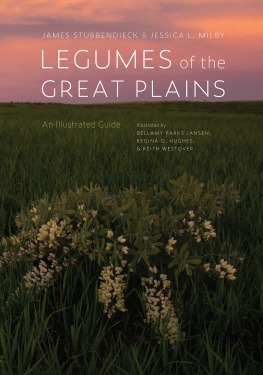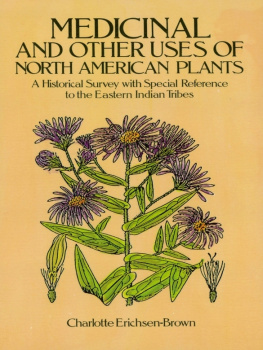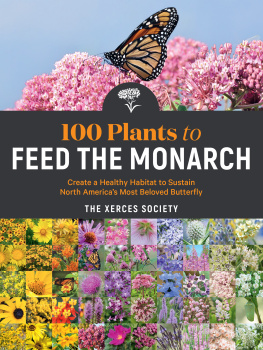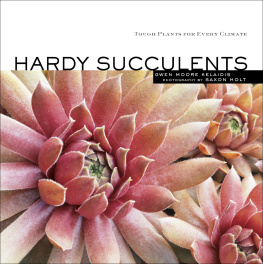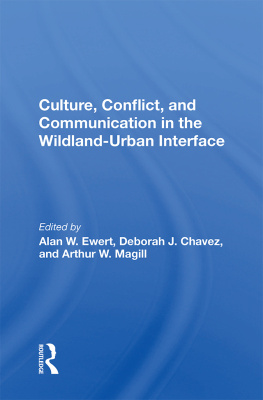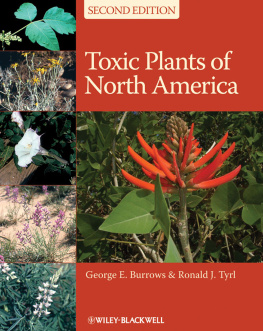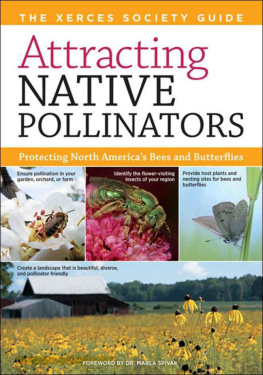James Stubbendieck - North American Wildland Plants
Here you can read online James Stubbendieck - North American Wildland Plants full text of the book (entire story) in english for free. Download pdf and epub, get meaning, cover and reviews about this ebook. year: 2017, publisher: University of Nebraska Press, genre: Home and family. Description of the work, (preface) as well as reviews are available. Best literature library LitArk.com created for fans of good reading and offers a wide selection of genres:
Romance novel
Science fiction
Adventure
Detective
Science
History
Home and family
Prose
Art
Politics
Computer
Non-fiction
Religion
Business
Children
Humor
Choose a favorite category and find really read worthwhile books. Enjoy immersion in the world of imagination, feel the emotions of the characters or learn something new for yourself, make an fascinating discovery.

- Book:North American Wildland Plants
- Author:
- Publisher:University of Nebraska Press
- Genre:
- Year:2017
- Rating:3 / 5
- Favourites:Add to favourites
- Your mark:
- 60
- 1
- 2
- 3
- 4
- 5
North American Wildland Plants: summary, description and annotation
We offer to read an annotation, description, summary or preface (depends on what the author of the book "North American Wildland Plants" wrote himself). If you haven't found the necessary information about the book — write in the comments, we will try to find it.
North American Wildland Plants — read online for free the complete book (whole text) full work
Below is the text of the book, divided by pages. System saving the place of the last page read, allows you to conveniently read the book "North American Wildland Plants" online for free, without having to search again every time where you left off. Put a bookmark, and you can go to the page where you finished reading at any time.
Font size:
Interval:
Bookmark:
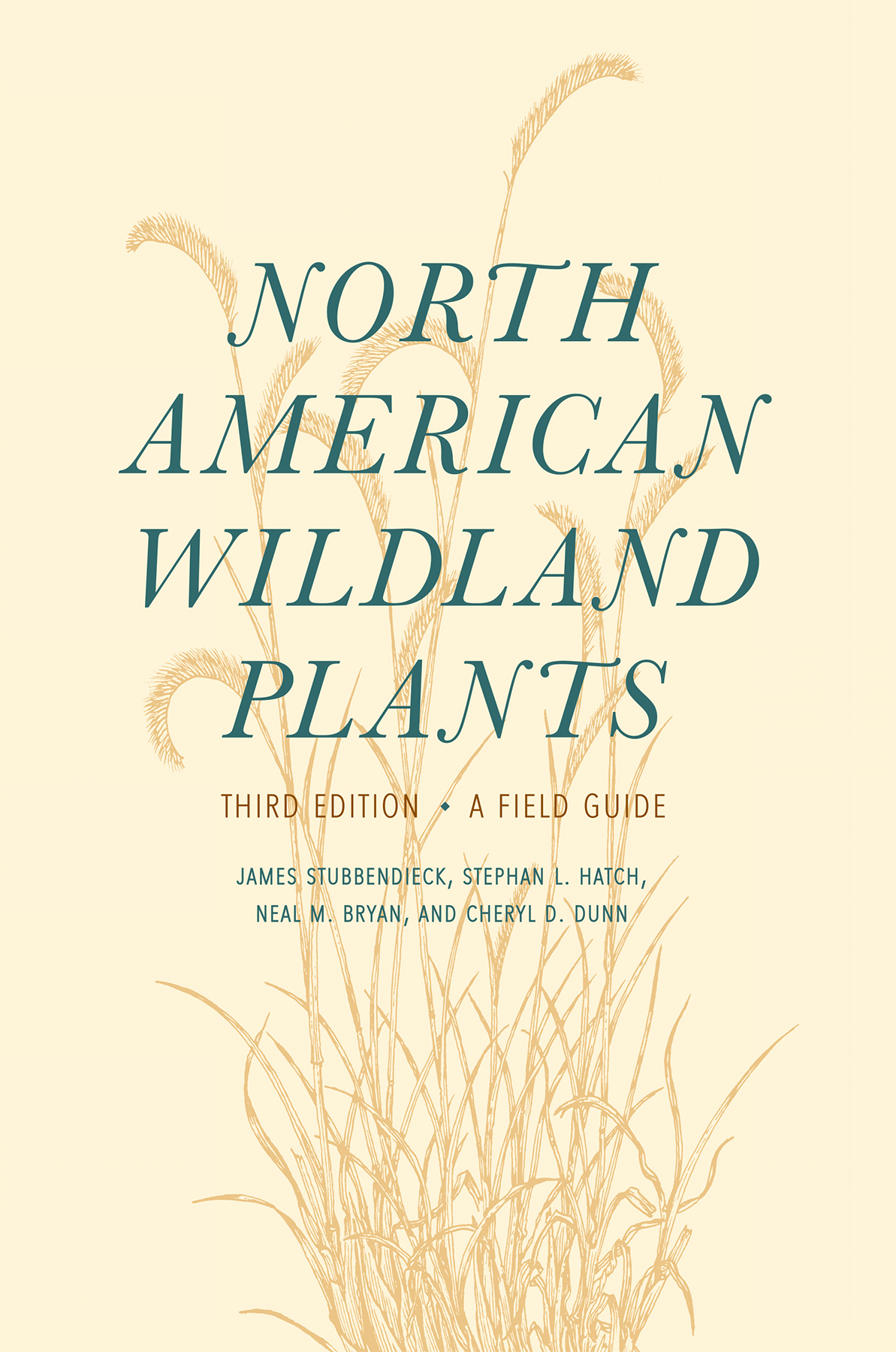
Will prove useful to both individuals with limited botanical knowledge as well as natural resource professionals in identifying wildland plants.
Natural Resources Journal
This standard in the field... just keeps getting better.
Choice
James Stubbendieck, Stephan L. Hatch, Neal M. Bryan, and Cheryl D. Dunn
Illustrated by Neal M. Bryan, Angie Fox, Kelly L. Rhodes Hays, Bellamy Parks Jansen, and Debra Meier
Maps by Kathleen Lonergan-Orr and Neal M. Bryan
University of Nebraska Press | Lincoln and London
2017 by the Board of Regents of the University of Nebraska.
Cover designed by University of Nebraska Press; cover image is from the interior.
All rights reserved.
Library of Congress Cataloging-in-Publication Data
Names: Stubbendieck, James L., author. | Hatch, Stephan L., 1945 author. | Bryan, Neal M., author. | Dunn, Cheryl D., author.
Title: North American wildland plants: a field guide / James Stubbendieck, Stephan L. Hatch, Neal M. Bryan, and Cheryl D. Dunn; illustrated by Neal M. Bryan, Angie Fox, Kelly L. Rhodes Hays, Bellamy Parks Jansen, and Debra Meier; maps by Kathleen Lonergan-Orr and Neal M. Bryan.
Description: Third edition. | Lincoln: University of Nebraska Press, [2017] | Includes bibliographical references and index.
Identifiers: LCCN 2016047607
ISBN 9780803299658 (pbk.: alk. paper)
ISBN 9781496200914 (epub)
ISBN 9781496200921 (mobi)
ISBN 9781496200938 (pdf)
Subjects: LCSH : Range plantsNorth AmericaIdentification. | Forage plantsNorth AmericaIdentification. | Range plantsNorth America. | Forage plantsNorth America.
Classification: LCC SB 193.3. N 67 S 88 2017 | DDC 633.2/02dc23 LC record available at https://lccn.loc.gov/2016047607
The publisher does not have any control over and does not assume any responsibility for author or third-party websites or their content.
To students striving to understand the complex nature of the plant world.
Plant names are listed by family, tribe (if applicable), and scientific name using the following format: FAMILY: Tribe: Scientific name.
The authors wish to acknowledge Kathie J. Diller, Charles H. Butterfield, and Lori M. Landholt for their contributions to earlier editions of this book. Angie Fox, Kelly L. Rhodes Hays, Bellamy Parks Jansen, Debra Meier, and Neal M. Bryan prepared the illustrations. Kathleen Lonergan-Orr and Neal M. Bryan prepared the maps.
Juan M. Martnez-Reyna, Jess Valds-Reyna, Juvenal Gutirrez-Castillo, and Juan A. Encina-Dominguez are recognized for furnishing the common names used in Mexico. Others contributing to this and earlier editions include Kelly Allred, Val Anderson, William T. Barker, Kylie Faulk, Jessica Garlick, T. Mark Hart, Marshall Hervey, Barry Irving, Rixey Jenkins, Stanley D. Jones, Robert B. Kaul, Gary E. Larson, Elizabeth Manrique, Jacob Meador, Catherine Mills, Daniel Nosal, Linda L. Rader, Jess Valds-Reyna, Walter H. Schacht, Susan Schuckert, Karen Spath, and J. K. Wipff.
We recognize the work and dedication of the range plant team coaches and thank Rixey Jenkins for providing the names: Eddie Alford, Gary Baird, Fee Busby, Gustavo Carillo, Craig Carr, Rob Cox, Shawn Dekeyser, Charlene Duncan, Cheryl Dunn, Amy Ganguli, Todd Golder, Ricardo Mata-Gonzalez, Laura Goodman, Mitch Greer, Micha Humphreys, Barry Irving, Toutcha Lebgue-Keleng, Keith Klement, Bob Knight, Gary Larson, Karen Launchbaugh, Casey Matney, Sarah Nowlle, Jennifer Obrigewitch, Steve Petersen, Tami Plechaty, Gustavo Quintata, Juan Martnez-Reyna, Zac Roehers, Dan Rogers, Alfonso Ortega-Santos, Ally Searle, Randall Violett, and Brett Wolk.
A comprehensive reference containing the important characteristics of the most important wildland plants of North America is critical for ecologists, range managers, land managers, and other natural resource professionals. In addition, university students and range plant identification teams needed a single, primary resource for learning about important wildland plant species. North American Range Plants was developed to meet these needs and was first published in 1981. Subsequent editions (1982, 1986, 1992, 1997) included changes in nomenclature, refinement of distributions, additional information on each of the species, and new illustrations. The illustrations were prepared to highlight general and specific characteristics to aid identification of the featured range plants. The fifth edition (1997) reflected changing attitudes toward riparian areas and wetlands. Reflecting this increased concern and interest, about 10 percent of the species included in this book occur on these sites. North American Wildland Plants (2003, 2011) included many nomenclatural changes, and the illustrations were labeled to accentuate specific characteristics. The title change reflected the importance of plants across ecosystems and the multiple uses of the plant resources within ecosystems. This edition contains additional refinements in the nomenclature, distribution, illustrations, and descriptions of plants. This reference will help both individuals with limited botanical knowledge and natural resource professionals to identify wildland plants.
The two hundred species in this book were selected because of their abundance, desirability, or noxious properties; in short, they are important wildland species. The list of plant species was developed over the course of nearly sixty years by faculty from the universities and colleges with rangeland management and ecology programs and by coaches of range plant identification teams. The formal list is now the Master Plant List for the International Range Plant Identification Contest sponsored by the Society for Range Management (6901 South Pierce Street, Littleton CO 80128; www.rangelands.org).
Plant species descriptions in this book include characteristics for their identification, a labeled illustration of a typical plant (with enlarged plant parts), and a general distribution map for North America. Each species description includes nomenclature; life span; origin; season of growth; inflorescence, flower or spikelet or other reproductive parts; vegetative parts; and growth characteristics. Forage values for wildlife and livestock are estimated. Brief notes are included on habitat; livestock losses; and historical, food, and medicinal uses. Information on historical, food, and medicinal uses was gathered from numerous sources and is presented as a point of interest and to broaden readers appreciation of these plants. It is strongly emphasized that these plant species should not be used for these purposes.
Grasses ( POACEAE family) are described first and are aligned by tribe, genus, and specific epithet in alphabetical order by rank. Grasslike plants ( CYPERACEAE and JUNCACEAE families) are next. All other families follow in alphabetical order by rank for family, genus, and specific epithet with the exception of members of the ASTERACEAE family, which are aligned as the POACEAE family.
The grass ( POACEAE ) and composite ( ASTERACEAE ) families are treated by tribe to help the reader relate to smaller groups within these large, complex families. Recognition of species within tribes builds a concept of tribal characteristics. When an unknown species of either family is encountered, knowledge of tribal alignments below family may reduce the time required for making an identification using a diagnostic key.
Font size:
Interval:
Bookmark:
Similar books «North American Wildland Plants»
Look at similar books to North American Wildland Plants. We have selected literature similar in name and meaning in the hope of providing readers with more options to find new, interesting, not yet read works.
Discussion, reviews of the book North American Wildland Plants and just readers' own opinions. Leave your comments, write what you think about the work, its meaning or the main characters. Specify what exactly you liked and what you didn't like, and why you think so.

